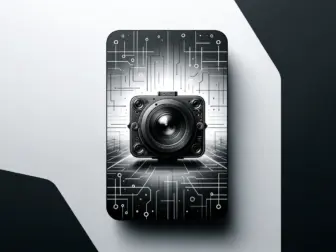Tag - Machine Vision
Understanding the Power of Machine Vision in Modern Technology
Machine vision, also known as computer vision, is a cutting-edge technology that enables machines to capture and interpret visual information. By using cameras, sensors, and algorithms, machines can understand and analyze images or videos just like the human eye. This technology has revolutionized various industries, from manufacturing and healthcare to autonomous vehicles and robotics.
One of the key advantages of machine vision is its ability to enhance productivity and efficiency in manufacturing processes. With the use of automated inspection systems, manufacturers can detect and identify defects in products with incredible accuracy and speed. This not only reduces the chances of errors and rework but also improves overall product quality. Additionally, machine vision can help streamline production lines, optimize inventory management, and track parts in real-time.
In the healthcare sector, machine vision plays a crucial role in medical imaging, diagnosis, and treatment. Medical professionals can use this technology to analyze X-rays, MRIs, and other medical images to detect abnormalities or diseases. Machine vision can also assist in robot-assisted surgeries by providing real-time feedback and guidance to surgeons. Furthermore, this technology can be utilized in monitoring patient vital signs, tracking medical equipment, and managing healthcare data efficiently.
The automotive industry has also embraced machine vision to develop advanced driver-assistance systems (ADAS) and autonomous vehicles. Cameras equipped with machine vision technology can detect road signs, pedestrians, and other vehicles to enhance driver safety and improve traffic flow. Moreover, machine vision enables self-driving cars to navigate complex environments, make real-time decisions, and avoid collisions. As a result, the future of transportation is becoming increasingly autonomous and efficient.
In the field of robotics, machine vision is essential for enabling robots to perceive and interact with their surroundings. Robots equipped with cameras and sensors can identify objects, navigate through environments, and perform tasks with precision. Machine vision technology allows robots to adapt to changing conditions, collaborate with humans, and enhance their capabilities in various industries such as logistics, agriculture, and healthcare.
Despite its numerous benefits, machine vision technology also presents challenges and limitations. Factors such as lighting conditions, camera quality, and image processing algorithms can impact the accuracy and reliability of machine vision systems. Furthermore, privacy and security concerns related to the collection and analysis of visual data must be addressed to ensure ethical and responsible use of this technology.
In conclusion, machine vision is a powerful tool that is transforming the way we interact with technology and the world around us. By leveraging the capabilities of machine vision, industries can improve efficiency, enhance safety, and drive innovation in the digital age. As this technology continues to evolve and advance, the possibilities for its applications are endless, promising a future where machines can see, understand, and act autonomously.
